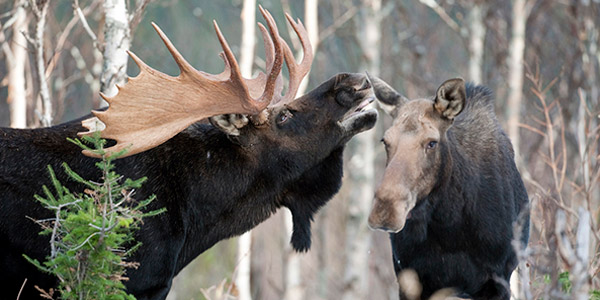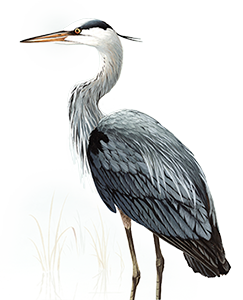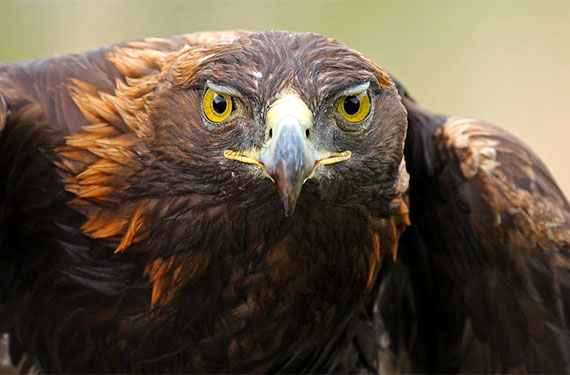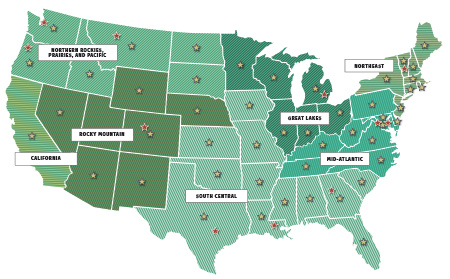
How do moose cross the road in Vermont?
That's a question the National Wildlife Federation's Northeast Regional Center is helping answer through the Critical Paths Project.
The National Wildlife Federation's Northeast Regional Center spearheads efforts to make safe pathways for wildlife in the pristine Worcester Mountains of Vermont, where some of the most deadly road crossings in America can be found. This Critical Paths Project is a model project that seeks to identify critical wildlife road crossings in the State of Vermont.
Working with the National Wildlife Federation's state affiliate, the Vermont Natural Resources Council, as well as the Vermont Department of Fish and Wildlife, Vermont Agency of Transportation, U.S. Forest Service, and Green Mountain and Finger Lakes National Forest, the National Wildlife Federation is studying the best places for corridors to help wildlife have room to roam.
To date the Critical Paths Project has identified 11 priority zones out of the 38 wildlife crossings along the spine of Vermont’s Green Mountains. Once the priority zones are identified, we then work with transportation officials to implement practical solutions that help reconnect habitat and protect wildlife.
Choosing Priority Zones
The project uses a combination of cutting-edge computer modeling and good old fashion on-site field work to determine where bottlenecks and impermeable crossings exist that can impede the free movement of animals.
The National Wildlife Federation worked with a team of state biologists and conservation organizations to identify 11 critical "Priority Crossing Zones" along the spine of the Green Mountains that are essential to south-north wildlife movement.
The researchers assessed the physical features of the crossings and the natural features of adjacent landscapes. They also tracked and monitored wildlife movement patterns at each crossing over an extended period of time.
What Happens Next?
We're working with resource professionals, transportation experts, and local citizens to develop key strategies to make Vermont's roads safer and improve wildlife habitat connectivity. These strategies include:
- Road mitigation—Gaps in guardrails allow animals to exit the road quickly. Less salt can be used. Along with lowering speed limits, improved road signage warns motorists they are entering a wildlife crossing zone. Culverts (water pipes under the road) constructed with wildlife in mind allow reptiles, amphibians, and small mammals such as fox and coyote to pass under the road. Over- and underpasses allow animals to pass above or below traffic.
- Roadside improvements for traffic safety and wildlife crossing—Removing trees and thick brush along the shoulder of the road improves visibility for drivers. Removing salt licks reduces the time wildlife spend near roadsides. Roadside vegetation and other improvements are made to encourage wildlife to cross at places where it is safe.
- Land conservation—Conserving land adjacent to a critical road crossing may afford wildlife several safe crossing options and promote habitat connectivity.
- Local land use planning—Towns and regions can incorporate specific provisions within their plans and related ordinances that provide for crossings for wildlife and safer roads for people. For example, carefully crafted subdivision regulations and creative zoning strategies, such as wildlife overlay districts, can ensure that new development minimizes the negative affects to wildlife crossings.
As wildlife habitat comes under increasing pressure from road development and climate change, the work of the Critical Paths Project will help enhance migration pathways, strengthen wildlife populations, and reduce animal-vehicle collisions.
Critical Paths Support
The Critical Paths Project was made possible with funding from the Wildlife Conservation Society, Vermont Department of Fish and Wildlife, and generous donations from individuals.









